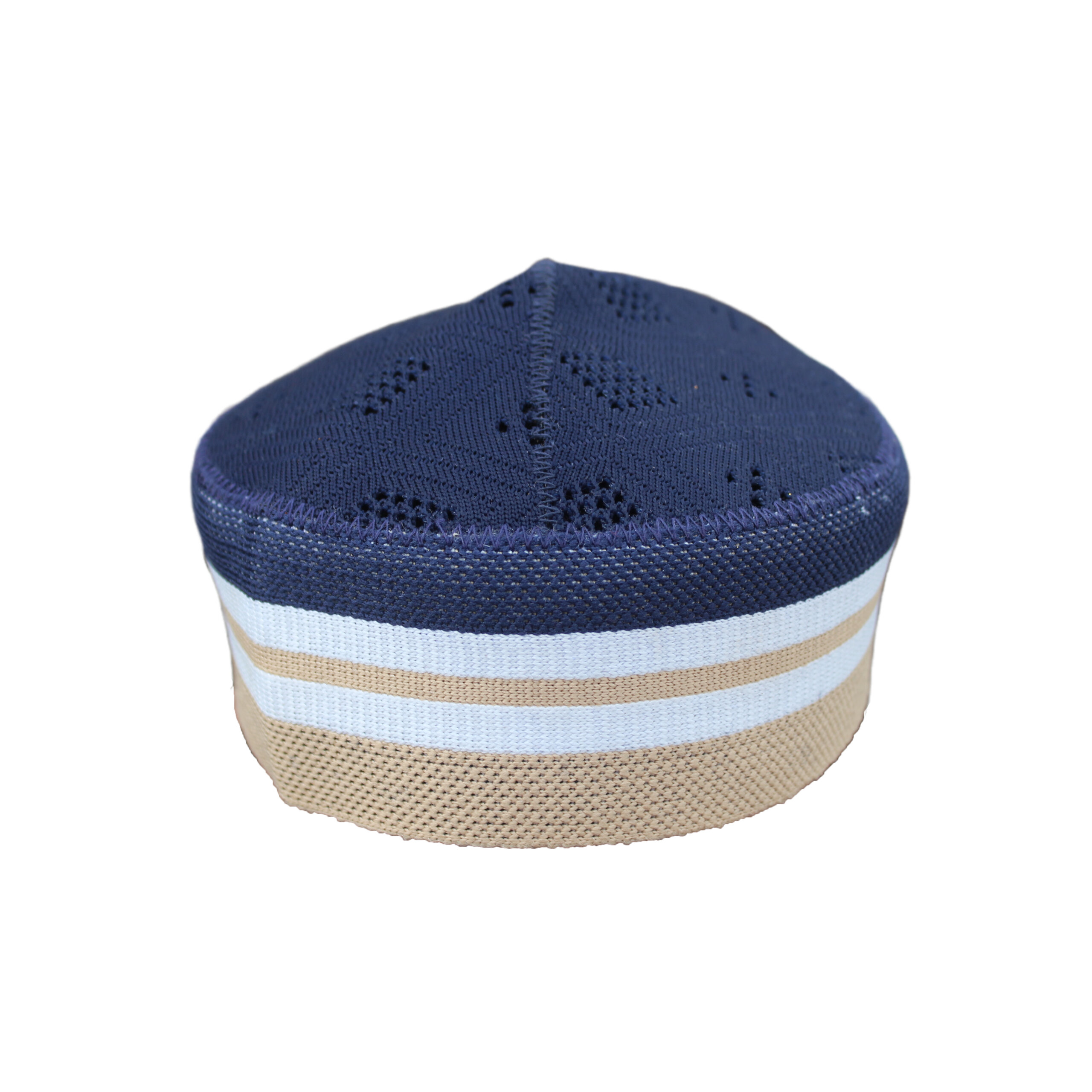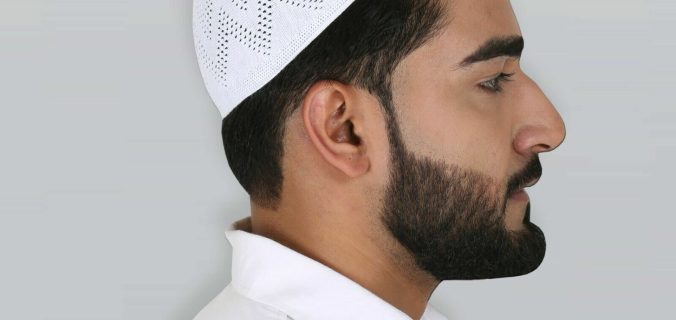Introduction
Traditional Muslim caps, known by various names such as “kufi,” “taqiyah,” or “peci,” hold significant cultural and religious importance across Muslim communities worldwide. These caps are not merely articles of clothing but symbols of identity, faith, and cultural heritage deeply rooted in Islamic tradition.
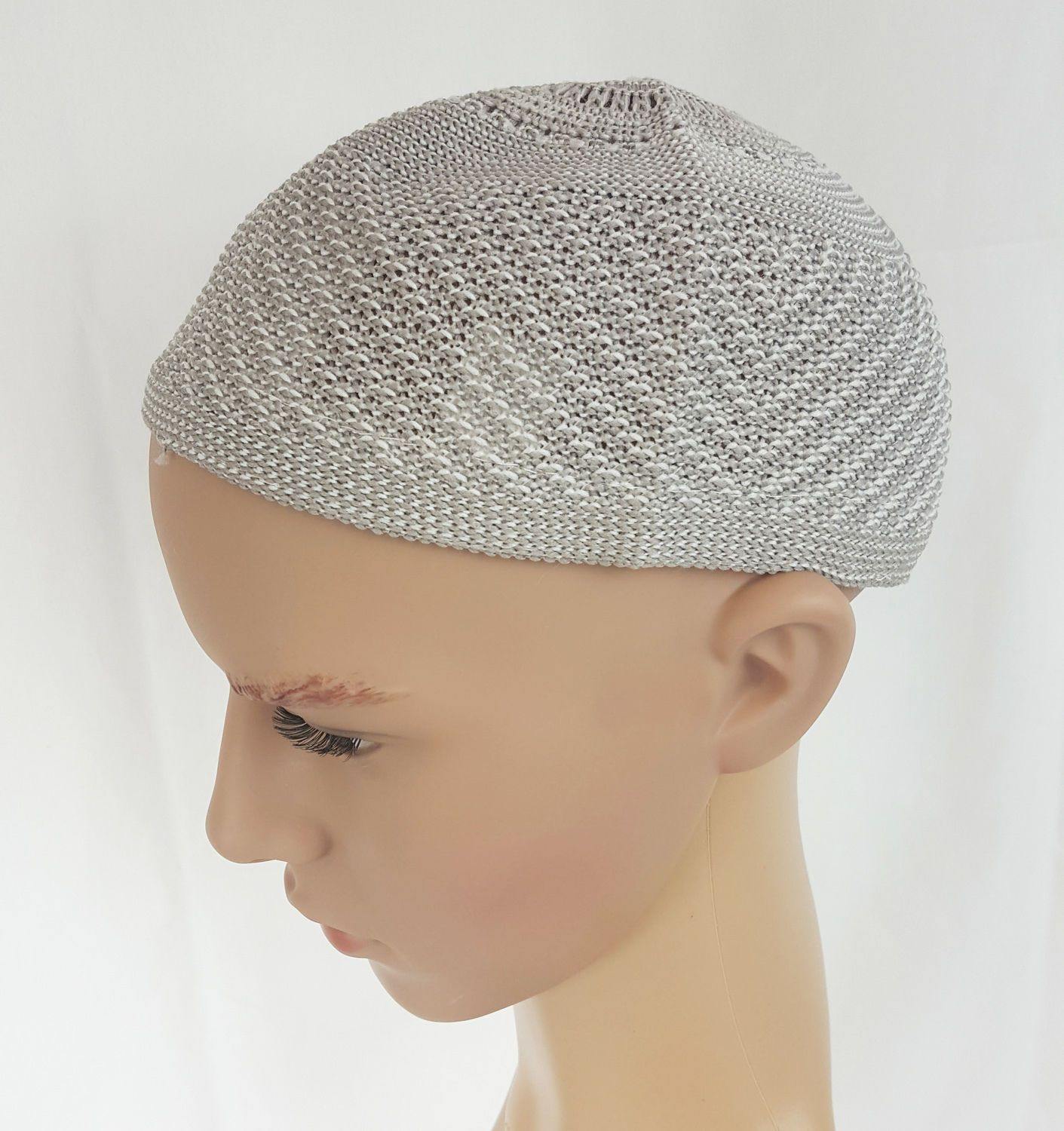
In Islamic culture, wearing a cap is considered a Sunnah (tradition) of Prophet Muhammad, who often covered his head as a sign of humility and respect during prayer and daily life. As such, the practice of wearing a cap has become a revered tradition among Muslim men, symbolizing their adherence to the teachings of Islam and their connection to the Prophet.
The design and style of traditional Muslim caps vary greatly depending on regional customs, cultural influences, and personal preferences.
For example, in the Middle East, the “kufi” is a popular style characterized by its close-fitting, cylindrical shape, often made from woven fabric or knitted wool. In South Asia, the “taqiyah” is prevalent, typically featuring a rounded or dome-shaped design, sometimes embellished with intricate embroidery or geometric patterns.
Beyond its religious significance, the Muslim cap serves as a symbol of cultural identity and heritage, representing the diverse traditions and customs within the global Muslim community. It is often worn on various occasions, including daily prayers, religious gatherings, festive celebrations, and significant life events such as weddings and funerals.
In addition to its religious and cultural significance, the Muslim cap also holds practical benefits.
It provides protection from the sun’s heat and glare, especially in regions with hot climates, and helps to keep the head warm in colder weather. Moreover, it serves as a visible marker of one’s Muslim identity, fostering a sense of belonging and solidarity within the community.
In recent years, the Muslim cap has gained recognition beyond religious and cultural circles, emerging as a fashion statement embraced by people of all backgrounds. Fashion designers and trendsetters have incorporated elements of traditional Muslim caps into contemporary styles, showcasing their versatility and timeless appeal.
However, it’s essential to acknowledge that the Muslim cap holds profound religious and cultural significance for many individuals, and its appropriation or commodification purely for fashion purposes can be seen as disrespectful or insensitive. It’s crucial to approach the wearing of traditional Muslim caps with respect and understanding, recognizing their sacred and symbolic importance to millions of Muslims worldwide.
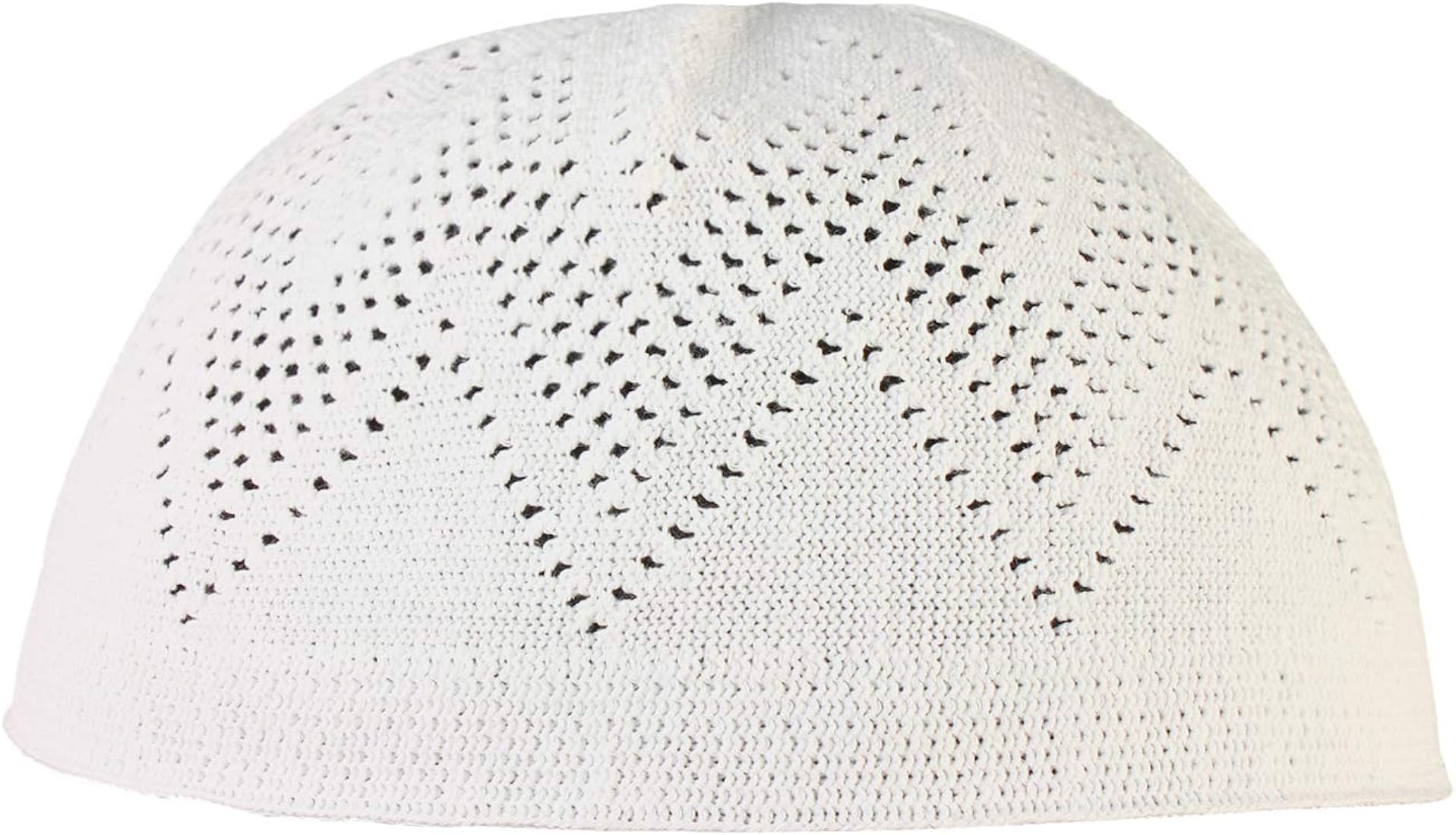
Cultural Significance and Historical Evolution:
Traditional Muslim caps have been an integral part of Islamic attire for centuries, with their roots tracing back to the early days of Islam. The practice of covering one’s head holds deep cultural and religious significance in many societies, symbolizing modesty, respect, and piety.
Throughout history, Muslim caps have evolved in style and design, reflecting the diverse cultural influences and regional customs of different Muslim communities. From the simple cloth caps worn by the Prophet Muhammad and his companions to the intricately embroidered caps adorned by royalty and scholars, these head coverings have adapted to changing times while retaining their spiritual and cultural importance.
Styles and Regional Variations:
The diversity of Muslim caps is evident in the various styles and regional variations found across the Muslim world. Some of the most common styles include:
- Kufi: Originating from the Arabic word “kaff,” meaning palm of the hand, the kufi is a close-fitting cap often worn in the Middle East and North Africa. It is typically made from woven fabric, leather, or knitted wool and comes in various shapes and sizes, from simple cylindrical designs to more elaborate embroidered versions.
- Taqiyah: Commonly worn in South Asia and Southeast Asia, the taqiyah is a rounded or dome-shaped cap made from fabric or knitted wool. It is often plain in design but may feature decorative elements such as embroidery, tassels, or beads.
- Peci: Also known as a “songkok” in some regions, the peci is a traditional cap worn in Indonesia and Malaysia. It is characterized by its flat, rounded shape and is typically made from black velvet or felt, sometimes embellished with gold or silver thread.
- Taj: The taj is a ceremonial crown-like cap worn by Muslim leaders, scholars, and royalty in various parts of the Muslim world. It is often elaborately decorated with jewels, pearls, and intricate embroidery, symbolizing authority and prestige.
Beyond Religious Symbolism:
While traditional Muslim caps hold deep religious significance, they also serve practical and cultural purposes. They provide protection from the elements, particularly in regions with extreme climates, and help to maintain a sense of cultural identity and solidarity within Muslim communities.
Moreover, traditional Muslim caps have become symbols of resistance and resilience in the face of adversity. In many societies where Muslims face discrimination or persecution, wearing a cap can be an act of defiance and assertion of one’s identity and dignity.
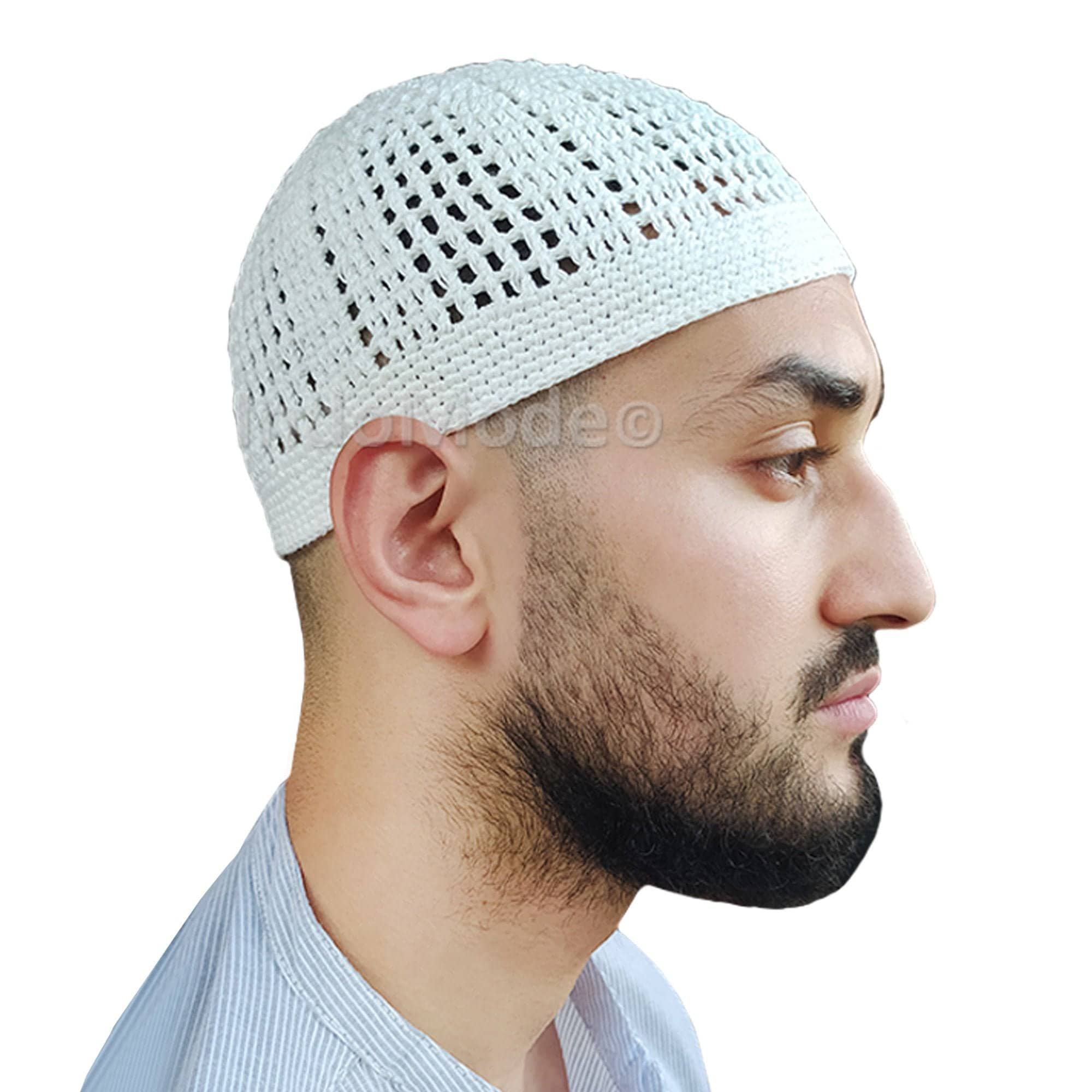
Symbolism in Contemporary Society:
In today’s globalized world, traditional Muslim caps continue to serve as powerful symbols of identity and belonging for Muslims living in diverse cultural contexts. They provide a visible marker of one’s faith and cultural heritage, fostering a sense of community and solidarity within Muslim diaspora communities.
Moreover, traditional Muslim caps have gained visibility in mainstream media and popular culture, challenging stereotypes and misconceptions about Islam and Muslims. By embracing their cultural and religious symbols, Muslims are reclaiming their narratives and asserting their presence in society.
Artistic Expression and Innovation:
In recent years, artists, designers, and craftsmen have explored creative ways to reinterpret traditional Muslim caps, blending traditional craftsmanship with contemporary aesthetics. From handcrafted embroidery to innovative materials and techniques, these modern interpretations celebrate the rich heritage and craftsmanship associated with Muslim caps while pushing the boundaries of design and innovation.
Furthermore, traditional Muslim caps have inspired fashion designers and brands worldwide, who incorporate elements of Islamic attire into their collections, showcasing the beauty and diversity of Muslim culture to a global audience.
Cultural Preservation and Revival:
In some communities, efforts are underway to preserve and revive traditional methods of cap-making, ensuring that age-old techniques and craftsmanship are passed down to future generations. These initiatives not only contribute to the preservation of cultural heritage but also provide economic opportunities for artisans and craftsmen in marginalized communities.

In conclusion
Traditional Muslim caps serve as more than just head coverings; they are symbols of faith, cultural identity, and religious expression deeply cherished by Muslim communities around the world. Whether worn for religious observance, cultural tradition, or personal style, these caps embody centuries of history, tradition, and reverence within the Islamic faith.
